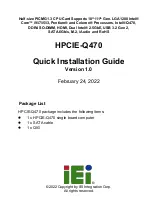
9
2.4.3 BR - Breakpoint
BR
Usage: BR addr <-r> <-c count> <-t trigger>
The BR command inserts or removes breakpoints at address addr. The value for addr may be an absolute
address specified as a hexadecimal value, or a symbol name. Count and trigger are numbers converted
according to the user defined radix, normally hexadecimal.
If no argument is provided to the BR command, a listing of all defined breakpoints is displayed.
The -r option to the BR command removes a breakpoint defined at address addr. If no address is specified
in conjunction with the -r option, then all breakpoints are removed.
Each time a breakpoint is encountered during the execution of target code, its count value is incremented by
one. By default, the initial count value for a breakpoint is zero, but the -c option allows setting the initial
count for the breakpoint.
Each time a breakpoint is encountered during the execution of target code, the count value is compared
against the trigger value. If the count value is equal to or greater than the trigger value, a breakpoint is
encountered and control returned to dBUG. By default, the initial trigger value for a breakpoint is one, but
the -t option allows setting the initial trigger for the breakpoint.
If no address is specified in conjunction with the -c or -t options, then all breakpoints are initialized to the
values specified by the -c or -t option.
Examples:
To set a breakpoint at the C function main(), the command is:
br
_main
When the target code is executed and the processor reaches main(), control will be returned to dBUG.
To set a breakpoint at the C function bench() and set its trigger value to 3, the command is:
br
_bench -t 3
When the target code is executed, the processor must attempt to execute the function bench() a third time
before returning control back to dBUG.
To remove all breakpoints, the command is:
br
-r








































